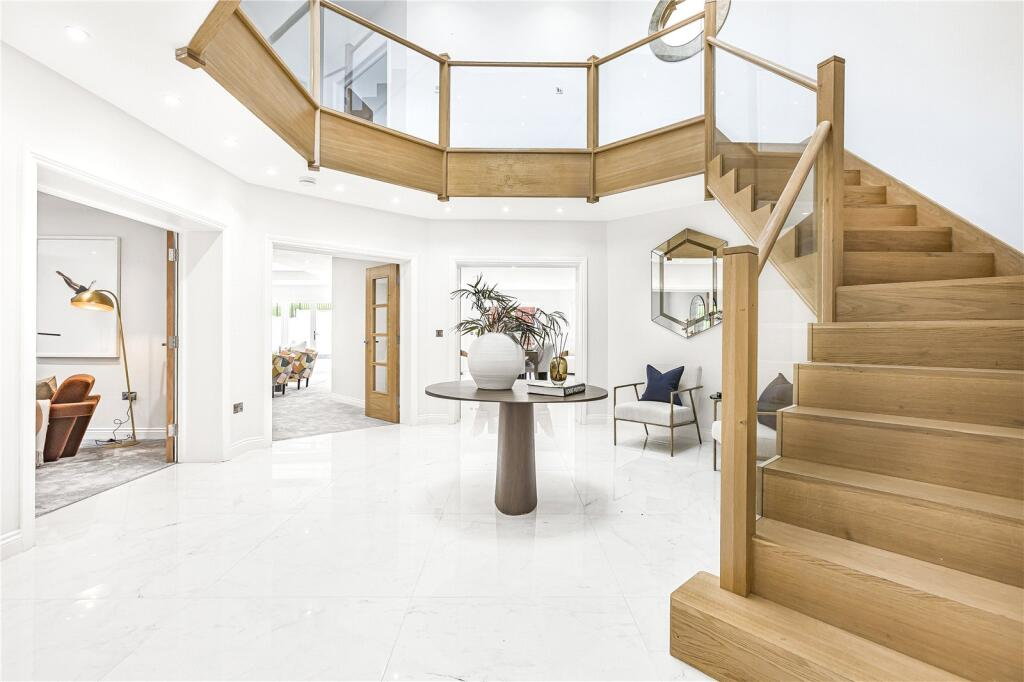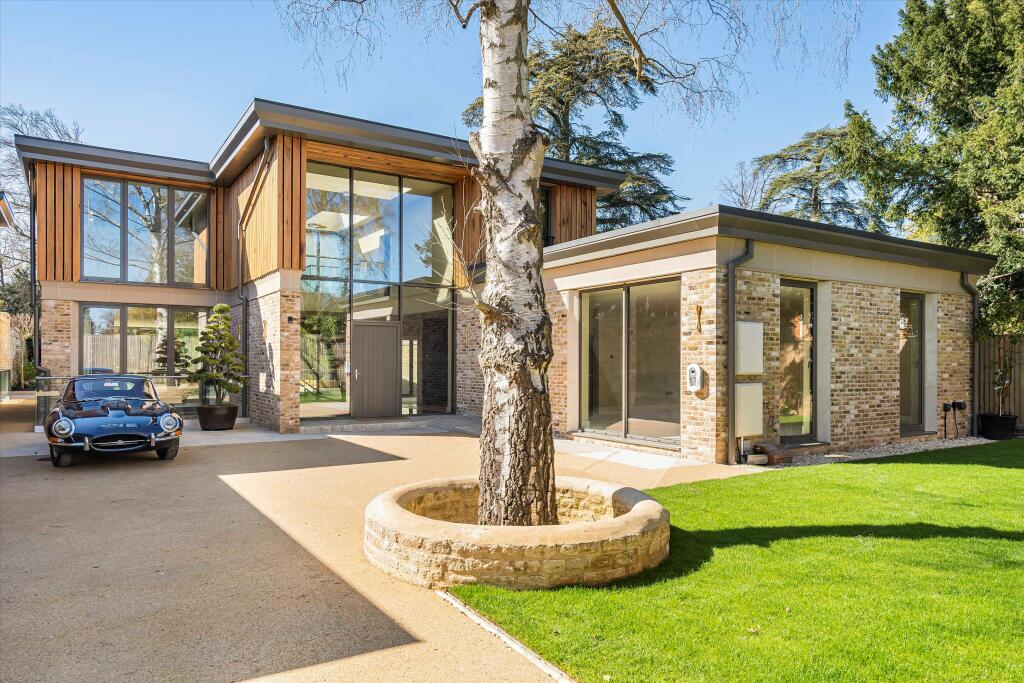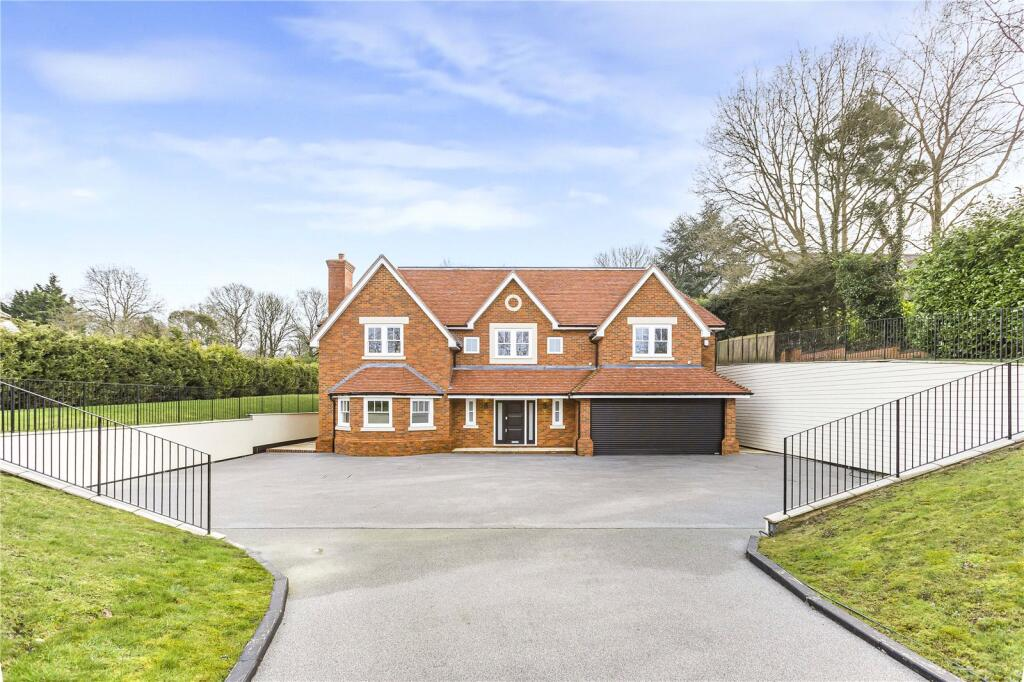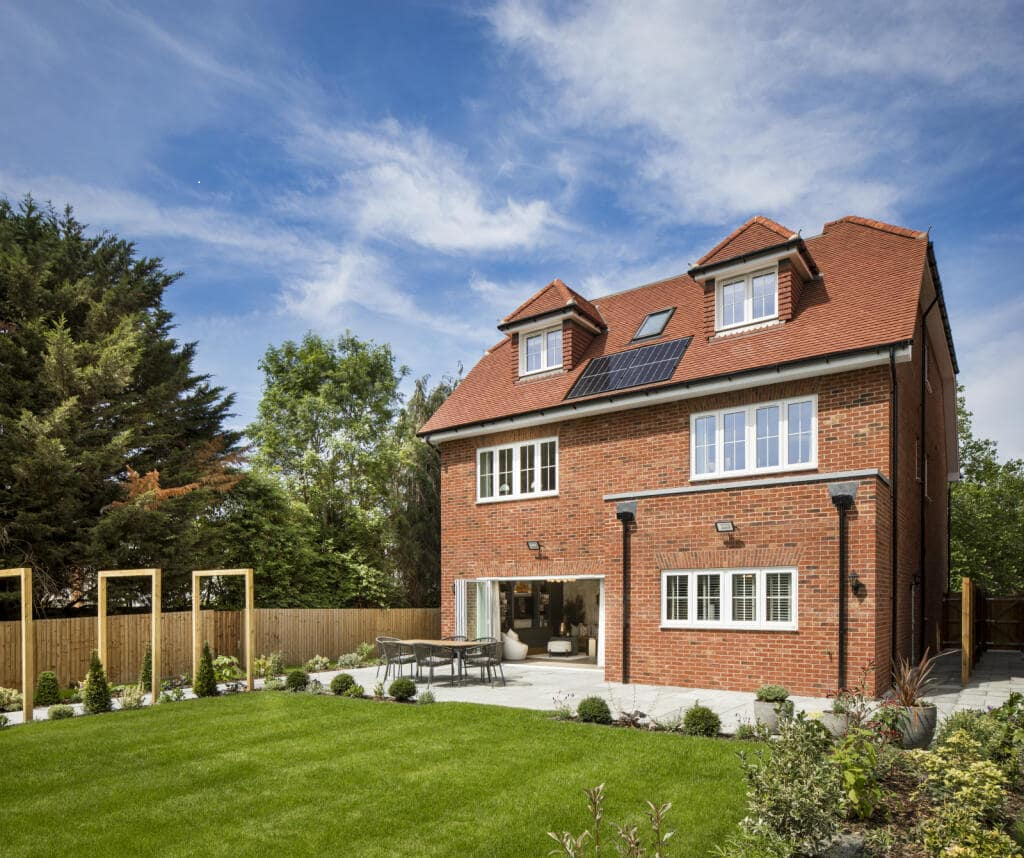Luxury House Builders Articles
What Landowners Should Know Before Selling to a Luxury Developer
July 22, 2025

Selling your land in the UK to a luxury property developer can be easier than selling to a buyer who belongs to a property chain. However, if you are a property owner, you should know that it is not only about the location and the price of the land. You should be aware of the planning permission and potential for development, and have a proper negotiation strategy.
If you own a piece of land in the countryside of Surrey or the areas of outer London, you must recognise its actual value. It will help you approach the luxury home developer with a clear sales strategy. In this Discussion, you will know how a landowner should maximise their gain when selling the land to a luxury home developer.
Assessing the Development Potential of Your Land
Before selling the land to the luxury house developer, assess the land’s potential. If your land is easily accessible with local amenities such as shopping malls, schools, and markets, your property value will be higher. Moreover, if the land is easily accessible from a nearby airport, it will yield significant value.
The luxury house developer can be interested in your property if it is not in a flood zone or within a conservation area. Luxury house buyers would not want a property with compliance issues. To understand the actual market value of your land, conduct a survey. You can also perform a preliminary planning assessment to see if the site is fit for luxury house development.
Understanding Planning Permission and Its Impact on Value
Planning permission can significantly increase your property value. If the luxury house development project is a large one, you can go for the outline planning permission. It gives you the permission to evaluate the suitability of the property and develop an outline plan without too many details.
Alternatively, a full planning permission can be obtained from the local authority, along with specific details of the project. If you already have planning permission for any of this, the luxury home developer might be very interested in your property. This is because he would not have spent time getting planning permissions. He can start the project as soon as possible.
Choosing Between an Outright Sale and a Joint Venture
If you have already decided to sell the land, consider your options thoroughly before the sale. A luxury house developer may offer you instant cash to buy the property. You will have minimal Risk factors to handle, but it will not be enough value in the long term.
To maximise the long-term value of your property, consider opting for joint venture construction. Look for a luxury home developer who is ready to start a joint venture to build the luxury home on your land. This way, you will be one of the owners of the luxury house. You can reap the benefits of a high return on investment on the luxury homes within a few years.
Prepare for the Legal & Financial Due Diligence
Before selling the land to the property developer, make sure that you have the right Land Registry title document and a proper boundary around the piece of land. Moreover, if you want to put a restriction on the buyer regarding construction work on the land, you should prepare a restrictive covenant. It signifies that both you and the buyer have agreed not to carry out specific construction work on the ground.
If your land is located in an area with easy accessibility and has the potential to appreciate shortly, you can consider an overage agreement with the property developer. With such an agreement in place, you can financially benefit from the sales of the luxury house in future when its value increases.
However, the best course of action would be to contact a UK solicitor with experience in land sales and related agreements. He will help you negotiate for the land and get the best value for it.
Negotiate Terms to Protect Long-Term Interests
If your land is in a premium area, don’t accept the first price your developer offers you. Negotiate your terms and price. Contact an RICS-accredited surveyor to know the actual value of your land. Premium areas, for example, Wimbledon Village or St Albans, can yield high returns in future.
If a large piece of land is for sale, do not sell it all at once. Instead, you can sell it in phases, allowing you to enjoy flexibility. You can also sell the land at a higher price in the future when the market price rises.
Conclusion
If you have decided to sell your land to a luxury home developer, it can be a transformative decision. However, maintain legal and financial due diligence before finalising the deal. If you own A large piece of land, sell it in phases. Once the luxury house construction is complete on one part of the land, the value of the remaining land will increase.
Get in touch with Luxury House Builders.
If you're looking to build a luxury home on your land, please get in touch with us. We can create the luxury home or flat exactly the way you want it. Our experts bring the best experience to the table when it comes to building luxury homes.
What is Residential Luxury Property Development?
July 16, 2025

If you’re considering building or investing in a residential development, it’s helpful to understand the three broad roles involved: the landowner, the developer, and the main contractor. While those roles can sometimes overlap, each has a clear purpose, and each can deliver real value when handled well.
1. Landowner
You don’t have to own a large site to be a “landowner” in this context. Even a garden plot, a small backland site, or a property with redevelopment potential can be a development opportunity.
As the landowner, your role is to provide the site. You might:
-
Sell the land outright to a developer or builder
-
Enter a joint venture, sharing the investment, risk, and eventual returns
-
Partner with a developer to fund the planning and entitlement stages
If you have a site with potential, teaming up with the right development partner can be a smart, low-risk way to unlock its value.
2. Developer
A developer takes the site and adds value through design, planning, and organisational know-how. Everyday developer tasks include:
-
Buying the land or forming a joint venture
-
Submitting planning applications and dealing with local authorities
-
Designing the scheme with architects and consultants
-
Feasibility studies and budgeting
-
Funding the pre-construction phase
-
Coordinating the project from start to finish
Developers wear many hats — part strategist, part project manager, and often part financier — making the project viable and attractive to the market.
3. Main Contractor
The main contractor oversees the actual build. That means:
-
Procuring materials and labour
-
Managing sub-contractors
-
Co-ordinating the construction programme
-
Ensuring quality control and site safety
-
Handling inspections, snagging, and certification
-
Completing the build on time and to budget
The best contractors don’t just build — they bring structure, accountability, and practical expertise to complex projects.
Why Understanding These Roles Matters
If you’re investing, selling land, or thinking about building, it helps to know which role suits you best:
|
You’re... |
You could... |
|---|---|
|
A landowner with a plot |
Team up in a joint venture or sell the land to developers |
|
A developer |
Take on all the roles — from feasibility through to sales |
|
Looking for a builder |
Work with a trusted main contractor who runs the site properly |
At Luxury House Builders, we often act as both developer and builder, guiding projects from land identification to design, planning, construction, and final handover. We don’t just build houses; we bring order, clarity, and quality to every stage.
How We Can Help
-
Landowners: We offer joint ventures or site purchase options, providing expertise and funds to make projects viable.
-
Developers: We can step in as the main contractor, giving you peace of mind that the build will be managed professionally.
-
Buyers/Investors: We deliver homes that are built well, on time, on budget, and up to modern expectations for quality and energy efficiency.
Final Word
Residential property development isn’t just about land or construction; it’s about bringing expertise, planning, and hands-on delivery together. Whether you're a landowner, developer, or investor, knowing these roles and how they fit can lead to better results.
If you’re exploring the development of a home or property, whether as a project owner, investor, or landowner, we’d be happy to offer honest guidance based on our years of experience.
What are the stages of building a New Luxury House?
July 14, 2025

Building a house from scratch is one of life’s most significant projects and one of the most rewarding. When you’re creating a luxury home, it’s not just about getting it built, but building it right. From the first idea to moving day, there’s a precise sequence of steps every homeowner goes through.
Having managed numerous projects over the years, here’s how we at Luxury House Builders see the process, broken down in plain English, so you know exactly what to expect.
1. Initial Ideas and Feasibility
Every home starts with a conversation. Sometimes it’s an idea for a piece of land you’ve seen, sometimes it’s a rough sketch of your dream layout. The first step is always understanding if your vision is possible.
At this stage, we’ll:
-
Discuss your goals, budget, and timescales
-
Look at potential plots or land options
-
Talk about style, size, and key features you’d like
-
Advise on any obvious planning challenges
This stage is about clarity, getting a sense of what’s achievable before moving further.
2. Securing Planning Permission
Once the idea is defined, we move towards securing planning consent. This involves working with architects and planning consultants to create a design that respects the local area, meets your brief, and stands the best chance of being approved.
Planning involves:
-
Architectural designs and site plans
-
Design and access statements
-
Ecology or heritage reports (if required)
-
Liaison with the local planning department
Planning permission typically takes between 8 and 12 weeks, though more complex sites (Green Belt or Conservation Areas) can take longer.
3. Detailed Design and Costings
After planning is approved, we move into the detailed design phase. This is where the home starts taking proper shape, and where we finalise specifications.
This stage covers:
-
Technical drawings
-
Structural engineering reports
-
Interior layouts
-
Kitchen, bathroom, and material choices
-
A full cost breakdown
For luxury homes, this is often the most enjoyable phase — choosing finishes, bespoke features, and seeing your vision come to life on paper.
4. Site Preparation and Groundworks
Once designs are finalised and permissions are in place, it’s time to break ground. Site preparation includes:
-
Clearing vegetation or old structures
-
Levelling the land if needed
-
Laying foundations, including footings and concrete slabs
-
Installing drainage and utility connections
This is where the home starts becoming real. Foundations are crucial, it’s not a glamorous stage, but it’s one of the most important.
5. Structural Build (The Shell)
This is when the structure of your house goes up. We’ll erect walls, floors, and roof — essentially building the “shell” of your home.
This phase includes:
-
Brickwork or timber framing
-
Roofing and external cladding
-
Window and door installations
Once this phase is done, the house becomes watertight, and you’ll start seeing the scale and proportions of the home.
6. First Fix Stage (Inside the Walls)
With the shell up, we move to the first fix stage. This is where all the essential services are installed inside the house:
-
Electrical cabling
-
Plumbing pipework
-
Heating systems
-
Ventilation
-
Stud walls and insulation
No finishes go in yet, this is the behind-the-scenes stage that makes the home functional.
7. Plastering and Interior Preparation
Once services are in place and tested, walls and ceilings are plastered and prepared for decorating. This transforms the site from a construction shell to something that starts feeling like a home.
At this stage:
-
Walls are made good and plastered
-
Floor screeding is done (if needed)
-
Rooms start taking their final shape
8. Second Fix Stage (Fittings and Features)
This is where the finishing touches begin:
-
Light fittings and sockets are installed
-
Kitchen and bathrooms are fitted
-
Internal doors, staircases, and bespoke joinery go in
-
Flooring is laid
-
Decoration begins (paintwork, tiling)
For a luxury home, second fix is where craftsmanship shines through, quality materials, bespoke details, and flawless finishes.
9. External Works and Landscaping
While the interior comes together, we’ll also be finishing external works:
-
Driveways, pathways, patios
-
Boundary walls or fencing
-
Soft landscaping — planting, turfing, trees
-
External lighting and garden structures (like pergolas or outdoor kitchens)
We believe a luxury home isn’t complete without outdoor spaces that feel just as considered as the interiors.
10. Snagging, Testing, and Final Sign-Off
Before the handover, we carry out thorough snagging and testing:
-
Ensuring everything works as it should (heating, electrics, water pressure)
-
Fixing any minor defects or imperfections
-
Obtaining building control sign-off
-
Final client walkthrough
Nothing is rushed; we take the time to deliver a home that’s truly finished.
11. Handover and Aftercare
Once everything is complete, it’s time for you to move in. We provide:
-
A comprehensive handover pack with warranties and manuals
-
Full certification and building control documents
-
Access to our aftercare team for any post-move-in queries
Our homes come with a 10-year structural warranty, plus aftercare for the first year to address any settling-in issues.
A Final Note
Every build is different, but the general stages remain the same. The difference with a luxury home is the care, thought, and detail that goes into every phase. It’s about getting it right, not just getting it done.
At Luxury House Builders, we manage every part of the journey, from your first idea to the day you unlock the front door. We believe building should feel exciting, not stressful, and we make sure it stays that way.
How to Get Planning Permission for a New Build Luxury Home
July 14, 2025

For anyone setting out to build their own home, planning permission is often the first significant step and for many, it’s also the most intimidating. We’ve been through this process many times over the years, both on straightforward plots and more challenging sites like Green Belt and Conservation Areas.
In our experience, planning isn’t about “ticking boxes”. It’s about understanding the local rules, working with the land you have, and showing the council you’re sensibly approaching things. Here’s how we guide clients through the process and what you should know if you’re thinking of building your own home.
Understanding What Planning Permission Means
When you build a new house, the council needs to be satisfied that your plans are appropriate for the area. Planning permission isn’t just about the design; it covers things like access, privacy for neighbours, ecological impacts, local infrastructure, and overall suitability.
If you’re building in a town or village, you’ll need to show the home won’t overshadow neighbours, block views, or put pressure on local services like roads and schools. If you’re building in a rural location, it’s about proving the home will sit comfortably in the landscape without harming the countryside.
Getting to Grips with Your Plot
Before we ever think about floorplans or architecture, we continually assess the plot itself. Where it’s located will make a massive difference to how complex (or easy) planning will be.
-
Brownfield sites (previously developed land) are generally easier, especially in towns or cities.
-
Greenfield sites (undeveloped land) are more complicated — the council will need to be convinced that the build is necessary.
-
Green Belt land comes with strict controls — exceptions can sometimes be made, but you’ll need a strong case, usually based on design merit or planning loopholes.
-
Conservation Areas and Areas of Outstanding Natural Beauty (AONB) add further restrictions, particularly around design and materials.
Before buying any plot, we recommend looking at the local council’s planning portal. See what has and hasn’t been approved nearby. Sometimes, neighbouring applications tell you everything you need to know.
Designing a Home That Gets Approved
When it comes to design, you’re balancing two things: what you want, and what the council will realistically approve.
In luxury housebuilding, it’s easy to get carried away with grand designs. But councils tend to approve homes that are sensitive to their surroundings. That doesn’t mean boring, it means thoughtful.
A few things we always consider:
-
Scale — is the house in proportion with others nearby?
-
Height and bulk — how does it sit in the landscape?
-
Materials — do they complement the area or clash with it?
-
Privacy — will it affect neighbours’ outlook or light?
-
Access — is there safe, sensible access to the road?
Every local authority has slightly different priorities. Some care more about design, others about sustainability. Understanding these local nuances can make all the difference.
Using Professionals Who Know the System
A well-prepared application stands a much better chance of approval. That’s why we always recommend working with an architect who knows the area and a planning consultant who understands local policy.
Your planning application isn’t just a drawing. It usually includes:
-
A detailed design and access statement
-
Location and site plans
-
Elevation drawings
-
Ecology surveys (where needed)
-
Flood risk assessments (if applicable)
-
Heritage statements (in Conservation Areas)
By having these professionally prepared, you avoid the common pitfalls that lead to rejections.
Don’t Skip Pre-Application Advice
Most councils offer a pre-application service. This isn’t compulsory, but it’s hugely valuable. You get informal feedback from planning officers before submitting a full application. It can save months of wasted time.
We’ve had projects where minor design tweaks after pre-app advice have meant smooth approvals on the first submission, versus fighting appeals months later because of an avoidable mistake.
The Typical Timeline for Planning Permission
In an ideal scenario:
-
Pre-app advice takes 4-6 weeks
-
Complete application takes 8-10 weeks
-
Revisions (if needed) add another 4-6 weeks
In reality, councils are often stretched. Complex applications can run longer. But with proper preparation, you’re much less likely to face long delays.
After Approval: The Next Steps
Planning permission comes with conditions, which might relate to landscaping, tree planting, or material choices. These need to be signed off on before building starts.
You’ll also need separate Building Regulations approval, which covers the technical side of construction (foundations, structure, insulation, etc.).
Once permission is granted, you have three years to start building. After that, the permission lapses.
Common Reasons New Build Homes Get Refused
In our experience, refusals usually come down to:
-
Poor design that doesn’t respect the surroundings
-
Negative impact on neighbouring properties
-
Overdevelopment of the site (trying to squeeze too much in)
-
Ecological harm (e.g., impact on wildlife)
-
Lack of access or highway safety concerns
Most of these issues are avoidable with proper planning and sensible design choices.
Final Advice from Our Side
Planning permission for a new build home isn’t something to fear, but it does need respect. The clients who have the smoothest experience are those who start with realistic expectations, invest in sound design, and listen to local feedback.
We always advise planning the process carefully, being patient, and using people who know what they’re doing. It can save you months and thousands of pounds further down the line.
What are the Benefits of having a New Build Home?
July 14, 2025

When you’re deciding between a brand new home and an older property, it’s easy to get drawn to the charm of period features. But having built and delivered homes across London and the South East, we’ve seen first-hand why more buyers are choosing new build homes, especially when it comes to comfort, efficiency, and peace of mind.
Here’s a closer look at the real advantages of owning a new build home.
1. Move-In Ready with No Hidden Surprises
With a new build, everything is brand new, the structure, the finishes, the appliances, meaning you won’t have to factor in renovation costs or deal with hidden problems like damp, outdated wiring, or roofing issues. You can move in straight away without worrying about costly fixes.
2. Tailored to You
Many new builds offer a level of customisation you won’t get with older homes. From selecting kitchen finishes to flooring and lighting choices, you can put your stamp on your home before you even move in. At Luxury House Builders, our clients are involved from the design phase, shaping every detail to suit their preferences.
3. Built for Modern Living
Today’s homes are designed with everyday comfort in mind. Think open-plan living spaces, dedicated home offices, en-suite bathrooms, and storage solutions built into the design. New builds are thoughtfully laid out for how families live today, without the compromises that come with outdated floor plans.
4. Greater Energy Efficiency
Modern building regulations mean new homes are much more energy efficient than older properties. Features like high-spec insulation, double or triple glazing, efficient heating systems, and renewable energy options (like solar panels or heat pumps) can reduce your energy bills and lower your environmental footprint.
5. Lower Running Costs
Because everything is new and energy efficient, running costs are often significantly lower compared to older homes. From heating and electricity bills to reduced maintenance costs, new builds can offer real savings over time.
6. 10-Year Warranty Protection
All new homes come with a 10-year structural warranty as standard, along with separate guarantees on fixtures, fittings, and appliances. This provides valuable peace of mind, especially compared to the unknown risks of buying an older property.
7. Safer and More Secure
Modern homes are built with the latest safety and security features, from hardwired smoke alarms to better locks, secure windows, and advanced fire safety standards. Many new builds are also pre-wired for security systems or innovative technology.
8. Incentives and Financial Perks
Depending on the developer, new build homes can come with helpful financial incentives, including part-exchange schemes, chain-free purchases, or even stamp duty savings in some cases. There are often fewer complications with the buying process, which can help your move happen quicker and with less stress.
9. A Fresh Start
With a new home, you get a completely fresh start, no outdated wallpaper, no lingering DIY disasters, and no need to undo someone else’s poor renovation choices. It’s a blank canvas ready to make your own.
10. Modern Communities and Infrastructure
New build developments are often part of thoughtfully planned communities, with green spaces, footpaths, and nearby amenities built into the scheme. It’s not just about the house — it’s about the environment you’ll be living in.
Final Thoughts
A new build home combines practicality, modern comforts, and long-term value, and at Luxury House Builders, we make sure those benefits come together with quality craftsmanship and timeless design.
If you’d like honest advice on building your own bespoke home or want to understand your options for a new build project, we’d be happy to talk, no pressure, just straightforward guidance from people who build homes properly.